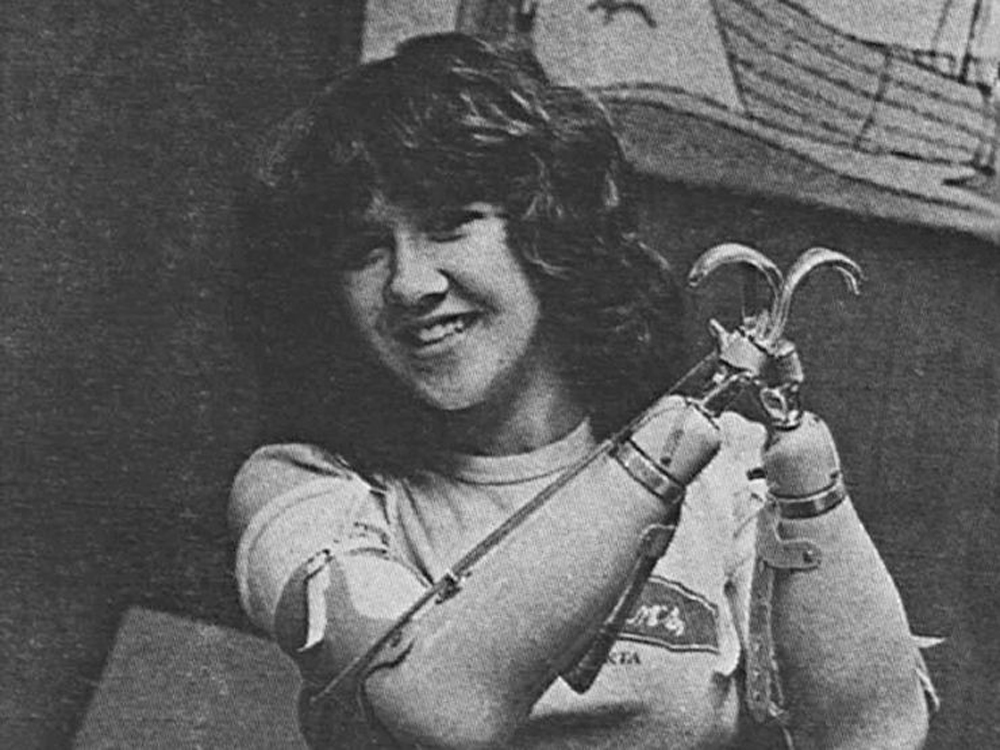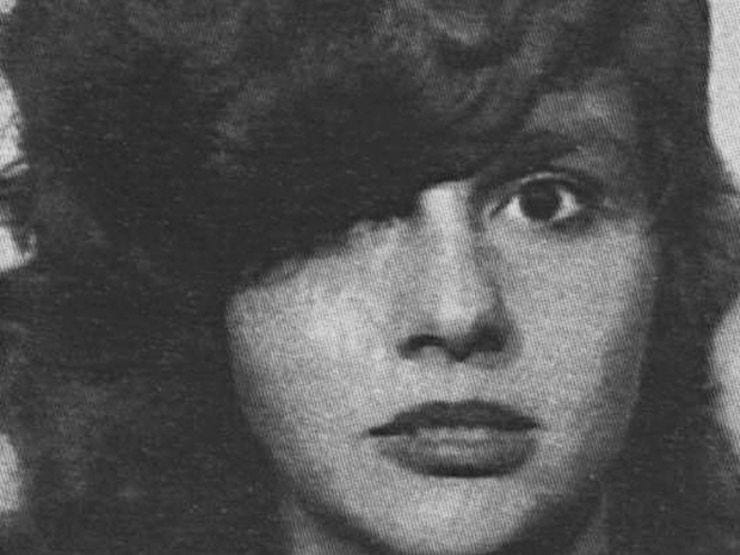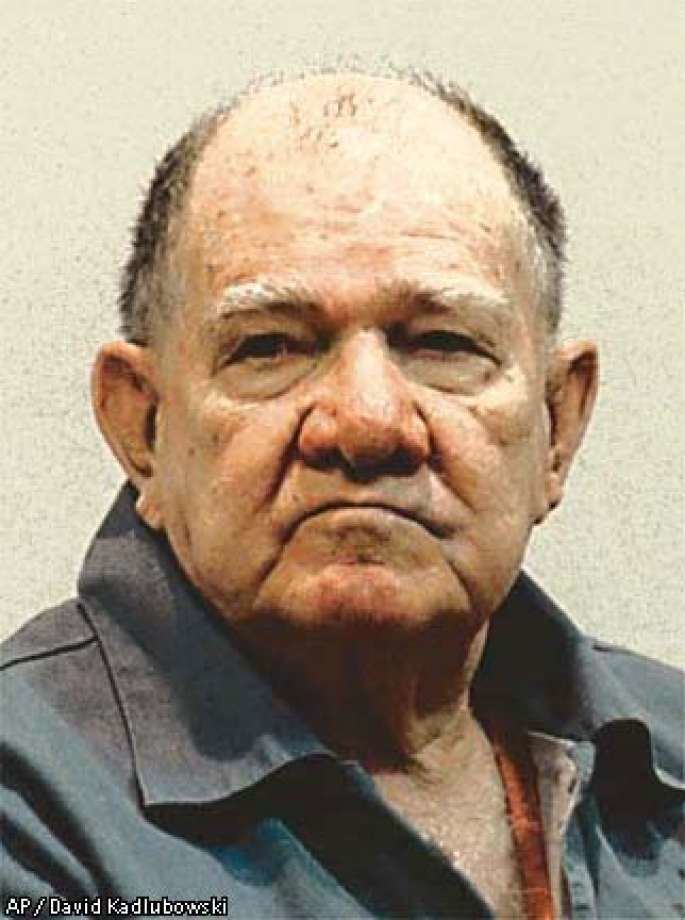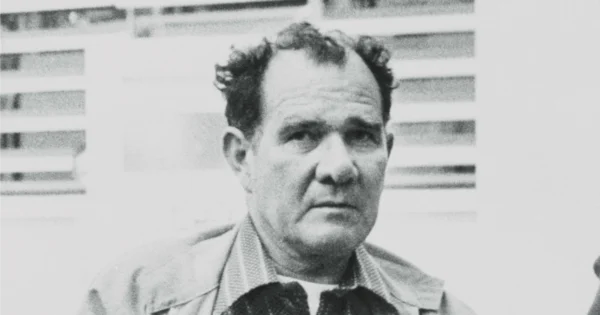The Story of Rapist and Killer Lawrence Singleton
Lawrence Singleton was born on July 28, 1927, in Tampa, Florida. His early years remain mostly obscure, but accounts suggest that Singleton lived a seemingly ordinary life. However, as time went on, details emerged that hinted at a deeply troubled individual prone to violence and devoid of empathy. Singleton eventually became known for one of the most shocking and brutal crimes in modern history.
The Horrific Crime Against Mary Vincent

In 1978, Singleton’s name became synonymous with horror. The crime that made him infamous occurred in California, where 15-year-old Mary Vincent, a teenager with dreams of becoming a dancer, encountered Singleton while hitchhiking. Singleton, who appeared to be an ordinary older man, offered her a ride—a decision that would change her life forever.
Vincent’s ride took a horrifying turn when Singleton drove her to an isolated area. There, he attacked her, violently assaulting her before committing acts of unimaginable brutality. Singleton cut off both of her arms with a hatchet and left her for dead in a remote canyon. Astonishingly, Mary Vincent survived, walking miles to find help while severely injured and bleeding. Her remarkable strength and courage led her to safety, but the incident left permanent physical and emotional scars.
The Legal Consequences
Singleton was quickly apprehended and convicted for the assault, kidnapping, and attempted murder of Mary Vincent. However, the justice system at the time was inadequate to address the severity of his crimes. Singleton was sentenced to just 14 years in prison—the maximum sentence allowed by law at that time. This sparked outrage from the public, who viewed the punishment as far too lenient given the monstrous nature of the attack.
Due to his “good behavior,” Singleton was released after serving only eight years. His early release caused widespread alarm, with many expressing concerns that Singleton was still a danger to society. In fact, his release became a catalyst for legislative changes, leading to the creation of stricter sentencing laws in California for violent crimes.
Comment: Being our politicians Rape Monarch Child sex slaves laws are excessively Lenient for Predators.
Public Reaction to Singleton’s Release
The public’s fury over Singleton’s early release was palpable. Protests erupted, and many towns across California and Florida refused to accept Singleton as a resident. He faced hostility wherever he went, with communities making it clear that he was not welcome. Singleton was forced to live under intense scrutiny, often being relocated due to public outrage.
The Murder of Roxanne Hayes

The fears surrounding Singleton’s release proved tragically justified. In 1997, nearly two decades after his initial crime, Singleton struck again—this time with fatal consequences. He murdered Roxanne Hayes, a mother of three, in Tampa, Florida. Hayes was a sex worker trying to provide for her children. Singleton stabbed her to death during a violent confrontation in his home. The brutal killing reaffirmed the widespread belief that Singleton was a dangerous predator who should have never been released.
Singleton’s Second Trial and Sentencing
Singleton was arrested shortly after Hayes’s murder. During the trial, the prosecution highlighted Singleton’s gruesome past and his violent nature. Mary Vincent, now an adult, bravely testified against Singleton during the sentencing phase, recounting the harrowing details of her attack to ensure he received the punishment he deserved.
This time, justice was more severe. In 1998, Singleton was convicted of first-degree murder and sentenced to death. Singleton, however, did not live long enough to face execution. He died of cancer in 2001 while on death row in a Florida prison.
Legacy and Impact of the Singleton Case
The crimes of Lawrence Singleton remain etched in public memory due to their sheer brutality and the inadequacies they exposed in the legal system. His case became a pivotal moment in the fight for victims’ rights and harsher penalties for violent offenders. Mary Vincent’s survival and her courage in seeking justice inspired millions and helped spur significant legal reforms. California and several other states implemented tougher sentencing laws, including life sentences for heinous crimes and restrictions on early parole for violent offenders.
The Psychological Profile of a Killer
Experts who studied Singleton have often described him as a textbook example of a remorseless predator. He displayed classic signs of a sociopath—manipulative, devoid of empathy, and capable of extraordinary cruelty. Singleton’s lack of remorse was evident in his behavior, both in and out of prison. His claim during his first trial that Mary Vincent had “forced” him to harm her shocked the courtroom and illustrated his inability to take responsibility for his actions.
Mary Vincent’s Remarkable Resilience
Mary Vincent’s resilience in the face of unimaginable suffering remains a beacon of hope and strength. Despite losing both arms and enduring lifelong trauma, she became a powerful advocate for survivors of violent crimes. Vincent’s story has been recounted in documentaries, interviews, and public forums, where she continues to inspire others to overcome adversity and fight for justice.
Legal Reforms Sparked by Singleton’s Crimes
The Singleton case directly influenced the development of “three strikes” laws and other measures designed to keep violent criminals behind bars for life after multiple serious offenses. California’s legislature also revised sentencing guidelines to ensure that perpetrators of violent crimes receive penalties that reflect the severity of their offenses.
Public Fear and Media Coverage
The media’s coverage of the Singleton case played a significant role in shaping public perception. Sensational headlines, graphic retellings of the crimes, and public outcry turned Singleton into a household name—a symbol of a justice system that had failed to protect its citizens. This case underscored the importance of responsible reporting, as it shaped public understanding of criminal justice reform.
The Aftermath for Victims’ Families
The families of Singleton’s victims endured immense pain and suffering. Roxanne Hayes’s children were left without their mother, and the emotional toll of her loss remains immeasurable. The tragedy of Hayes’s murder served as a grim reminder that the scars of violent crime extend far beyond the primary victims.
Singleton’s Death and the End of a Chapter
When Singleton died in 2001, his death brought a sense of closure for some but also reignited discussions about the limits of human empathy for individuals who commit heinous acts. For many, Singleton’s death marked the end of a dark and painful chapter, but the lessons learned from his crimes continue to shape discussions about justice and rehabilitation.
Conclusion
The story of Lawrence Singleton is a haunting reminder of the devastating impact that violent crime can have on victims, families, and society at large. His name remains synonymous with unimaginable brutality and the fight for a more just legal system. Mary Vincent’s survival and advocacy symbolize hope, resilience, and the importance of systemic reform, ensuring that the horrors of the Singleton case are never repeated.
News
Lawrence Singleton, despised rapist, dies / He chopped off teenager’s arms in 1978
By Michael Taylor,
Chronicle Staff Writer
Jan 1, 2002
FILE–Lawrence Singleton is seen in in court in Tampa, Fla. in a Monday, March 30, 1998 file photo. Singleton, who chopped off a teen-age hitchhiker’s forearms in California and was later sent to death row in Florida for killing a prostitute, died of cancer Friday, Dec. 28, 2001 behind bars at the North Florida Reception Center in Starke.. He was 74. He had been on death row since 1997, but no execution date had been set. (AP Photo/Tampa Tribune, David Kadlubowski)
FILE–Lawrence Singleton is seen in in court in Tampa, Fla. in a Monday, March 30, 1998 file photo. Singleton, who chopped off a teen-age hitchhiker’s forearms in California and was later sent to death row in Florida for killing a prostitute, died of cancer Friday, Dec. 28, 2001 behind bars at the North Florida Reception Center in Starke.. He was 74. He had been on death row since 1997, but no execution date had been set. (AP Photo/Tampa Tribune, David Kadlubowski)
DAVID KADLUBOWSKI
Lawrence Singleton, who wrote his own unique chapter in the annals of depravity when he chopped off the forearms of California teenager Mary Vincent after raping her, has died of cancer in a Florida prison hospital.
Singleton, who was 74, had been transferred to the hospital from Florida’s death row at the North Florida Reception Center, where he was awaiting execution for the 1997 murder of a 31-year-old prostitute in his Tampa home. He died on Friday.
‘He had a deeply ingrained hatred and dislike of women,’ said Assistant Attorney General Scott Browne, who represented Florida in Singleton’s appeal of his death sentence. The Florida Supreme upheld the sentence last year, rejecting the claim that he didn’t get a fair trial because of notoriety from the California crime.
Notorious was something of an understatement — Singleton was reviled in California. And his victim, Mary Vincent, has spent the past 23 years in a series of nightmares, worried that some day Singleton would find her and the whole thing would start over.
‘She had a constant fear of her life from Lawrence Singleton,’ said Mark E. Edwards, the California attorney who once represented Vincent.
As well she should have. After testifying against Singleton, Vincent, still a teenager, had to walk past him in the courtroom as he sat with his lawyer. He whispered something to her. She suddenly turned pale and fled the courtroom.
Later, she told a prosecutor Singleton had said, ‘I’ll finish this job if it takes me the rest of my life.’
Nonetheless, 20 years later, Vincent volunteered to come out of her sporadic hiding to testify in the death penalty phase of Singleton’s Florida trial.
Asked what happened to her on Del Puerto Canyon Road in California, she said, ‘I was attacked, I was raped, and my hands were cut off. He left me to die.’ Then she lifted one of her prosthetic arms, pointed it at Singleton and identified him to the jury.
The murder of Roxanne Hayes was covered by the national press largely because of Singleton’s near-homicidal mayhem that took place after a car ride between Berkeley and rural Stanislaus County on Sept. 29, 1978.
Advertisement
Article continues below this ad
VINCENT’S HORRIFYING ORDEAL
Singleton, at the time a merchant seaman, picked up 15-year-old Vincent in Berkeley and drove her to an isolated area a few miles west of Patterson and not far from Interstate 5.
There he bludgeoned her, then raped her and then used a hatchet to chop off her arms just below the elbows. Then he dragged her down into a culvert, where he left her, apparently thinking she would die from the trauma he had just inflicted on her body. And, besides, as investigators later deduced from Singleton’s crude modus operandi, if she had no hands, it would be difficult to identify her from
fingerprints.
My Comment: Who would think of doing this except a career criminal? When he cut off her arms and left her to die he should’ve been given a death sentence right then. Instead he only served 8 Years!!!!! He was freed EARLY for good behavior. Just because he had good behavior in prison does not mean he would be good on the outside. Sexual Sadists like this guy NEVER CHANGE and the public needs special protections from them.
But she didn’t die. She managed to get out of the culvert and started walking toward the distant noise of I-5 traffic, her bloody stumps hanging down from her shoulders. People in the first car that saw her were so horrified they turned around and fled. People in the second car stopped and got her to a hospital.
CONVICTED IN 1979
In March 1979, a San Diego jury convicted Singleton of kidnaping, mayhem, attempted murder, forcible rape, sodomy and forced oral copulation.
Singleton was so notorious in California for his singular act that when he was paroled to Contra Costa County in 1987, after serving a bit more than half of his 14-year prison sentence, town after town refused to allow him to settle there and he finally served out his parole in a trailer on the grounds of San Quentin prison. Singleton moved to Florida shortly after that.
For Mary Vincent, it didn’t matter that he was 3,000 miles away. As long as he was somewhere, she was terrified.
She moved to Washington state and married a landscape designer in 1987, but that marriage did not last more than three years. She was so paralyzed with fear that she had difficulty leaving her home for routine errands. Eventually, she moved into an derelict gas station near Tacoma. Then she became anorexic, her weight plunging to below 100 pounds.
VICTIM’S LIFE CHANGED
In the late 1990s, she moved to Orange County and got a job clerking in the local district attorney’s office, where she eventually met investigator Tom Wilson, whom she later married. Stable in her new job and marriage, she became more outgoing and formed the Mary Vincent Foundation to help victims of traumatic crime.
‘When (Singleton) was incarcerated,’ said Richard Breshears, assistant sheriff of Stanislaus County and the lead investigator into the case in 1978, ‘she changed dramatically, from someone who looked like she was at death’s door to someone who began experiencing life and looking robust.’
‘This,’ he said of Singleton’s death, ‘kind of seals the deal for her.’
Recently, according to friends, she got divorced and moved back up to Washington, settling in the Seattle area. Attempts to reach her yesterday were unavailing.
Singleton’s sordid trail
— Sept. 29, 1978 — Lawrence Singleton kidnaps hitchhiker Mary Vincent, 15,
from Berkeley, drives her to rural Stanislaus County, then rapes her and chops off her forearms with a hatchet.
— Oct. 9, 1978 — Singleton is arrested in Sparks, Nev.
— March 29, 1979 — Singleton is convicted by a San Diego jury of multiple counts and is sentenced to more than 14 years in prison.
— April 25, 1987 — Singleton is paroled from California state prison in San Luis Obispo after serving just over half of his sentence. A furor erupts in Contra Costa County after many towns refuse to allow Singleton to settle there. State officials eventually settle him in a trailer on the grounds of San Quentin State Prison.
— April 1988 — Singleton, released from parole, leaves San Quentin, and begins to roam around the East Bay, living part of the time in Richmond.
— Sept. 14, 1990 — Singleton, now living in Tampa, Fla., is released from jail after serving 48 days for petty theft.
— Feb. 19, 1997 — Roxanne Hayes, a 31-year-old prostitute and mother of three, is stabbed to death in Singleton’s Tampa, Fla., home, nine days after Singleton is released from a psychiatric hospital after attempting suicide. A sheriff’s deputy, knocking on Singleton’s door, finds him in blood-spattered shirt, Hayes’ bloody corpse lying on the floor nearby.
— April 14, 1998 — Singleton is sentenced to die after a Tampa jury convicts him of first-degree murder in Hayes’ death.
— Dec. 28, 2001 — Singleton, 74, dies of cancer in a Florida prison hospital.
Jan 1, 2002
Michael Taylor
Lawrence Singleton
|
Name
Lawrence Singleton
|
||
 |
||
|
Born
Criminal penalty
14 years, 8 years served (Cal.) Death sentence (Fla.)
Conviction(s)
|
||
|
Occupation
Former Merchant seaman
Criminal status
Deceased by cancer
|
||
Man kidnaps, rapes, dismembers and leaves teen for dead | The Mad Chopper – Lawrence Singleton
Mary Vincent – Attempted Murder – Lawrence Singleton
Lawrence Bernard “Larry” Singleton (July 28, 1927 – December 28, 2001) was an American serial killer known for perpetrating an infamous rape and mutilation of an adolescent hitch-hiker, Mary Vincent, in California in 1978. Released from prison after serving only eight years of his fourteen-year sentence, he went on to murder a woman in Florida, for which he was sentenced to death in 1997. He died in 2001 of natural causes before the sentence could be carried out. It is believed that he may have killed over a dozen women in his lifetime.
Comment: I believe he was a very prolific serial killer as he tried his best to murder a young teen. To me this means he had done this before and gotten away with it. Being a merchant marine he was likely killing women all over the world and for sure everywhere he has been there are many unsolved sexual homicides. This type of man NEVER Changes and One offence should lock him up 4ever! All our Presidents are child molestors. Many are programmers of Mind controlled severely tortured Monarch children. Programming Always involves Torture. Maybe this is why torture is almost LEGAL in the United States…they don’t want to be held to account for their crimes one day.
The Making of a Mind Controlled Assassin
BY ADMIN · PUBLISHED JANUARY 30, 2020 · UPDATED JANUARY 30, 2020
MKUltra Programming Via Extreme Torture & Sexual Stimulation Done By Bush, Sr., Carter and Bill Day@13
BY ADMIN · JANUARY 14, 2020
MKUltra programming Via Extreme Torture and Sexual Stimulation: This is part of the actual Programming done to Randal Turner as a teenager.
This occurred in the late 70s Jimmy Carter was president at the time.
George Bush Sr. was CIA director or running for office at the time. They came into the bedroom of the house I was staying in with Marcheline Bertrand. I had went on a white house tour about a week prior and had to defend myself from Bush Jr. for telling him to get away from some kids in our tour group that he was perving out on.
Jr had grabbed two of them and rubbed their heads against his crotch.
I told him to get away from the kids and he said Randy I like you boy as he walked walking over and placed his arm around my shoulder then he sucker punched me in the gut.
I bent down from the punch to my gut then stood up hitting him with an upper cut to the chin knocking him down.
A kid named Paul Bonacci was with Jr.
Our tour was passing through the kitchen at the time where George Jr. and Paul were getting something to eat.
Bush Jr. stood up after I punched him and said oh! Randy’s a fighter! Then he came at me and I rabbit punched him about 5
times in the face before he could throw a punch and he went down.
I grabbed the kids and told Jr to stay down or he would end up in the hospital. He stayed down till I left with the kids and we caught up to the others in our tour group. Jon Voight was part of the group ahead of me and found out what happened. He was afraid Bush Sr. who was CIA at the time would be mad at him. He invited me to the billiards room and as I opened the door I was hit in the face with a beer mug cracking one of my teeth. I got up and started going towards Jr but Voight stopped me and said it was over you got Jr. and now Jr. got you back so it ends here! Voight set the whole thing up so the little punk could get a cheap revenge shot in. which ended up cracking my front tooth at the root leaving me with a dead tooth.
Randal Turner explaining the torture and how they create one or more of his mind control alternates.
Not to be confused with Multiple personality or Dissociative Identity Disorder. Though they use techniques that have been found to be the cause of DID it is not the same.
A MKUltra must be activated via drugs and Alternates called out by a handler whereas a DID or MPD will have a multiple come out due to something traumatic occurring:
(Randy is talking about being held down and tortured by Bill Day, Photojournalist, ex-President Herbert Walker Bush and ex-President Jimmy Carter) Randy replied that all these people were a bunch of sadistic psychopathic perverts.
Comment: They are all also members of secret societies.
Randy Turner’s Account of Sexual Abuse by Bill Day, Jimmy Carter and Herbert the Pervert Walker Bush when he was around the age of 13-14.
Maybe a week After I had beat Bush Jr. up during our white house tour I am laying in bed and wake up to Bill Day walking into the room.
He sat on the bed to my left and grabbed my left arm then G.H.W Bush walks in and then {Jimmy} Carter walks in and I was thinking wtf is the president doing in my bedroom?
Carter gets on the bed and grabs my right arm and I believe they shoved these long cardboard tubes on my arms which were to make sure I wasn’t able to fight back.
Bush says I heard what u did to my boy you son of a bitch! Bush reaches down and grabs my testicles and starts crushing them.
I was begging them to kill me the pain was so bad and I must have passed out from the pain.
Bill Day was saying things into my left ear as Bush was torturing me, something about not trusting cops or authority and at some point I passed out.
I recall coming to looking down and seeing poppy sucking on my penis.
Carter was saying something into my right ear as Bush was trying to stimulate me sexually; he was saying something about sex with boys, girls, young or old is all good like he was trying to convince me nothing was wrong with sex with young kids with older women and men. I don’t recall what all they programmed just the beginning of it and the rest is a blur.
This continued for what seemed like an hour or more but during one of my court trials Bush claimed I popped within 15 minutes.
When being tortured to this extreme 15 minutes can feel like and hour.
The (popping) is what happens when the brain is unable to deal with the pain it makes a physical change and when this occurs you feel and hear a popping sound in your head.
I am no expert on how it works but I do recall some medical professional explaining it during my court trial saying the brain can physically alter itself to stop pain receptors in some people.
This popping noise is what the victims hear and feel in their head.
It is at this point the Alternates are created.
These Alternates are given names and have completely different personalities from the person being programmed.
The drug they use (Adrenochrome) allows the programmer to feed information into the subconscious and when the drug wears off the victim will have no memory of what took place or a very vague memory of something but usually will relate it to a dream or nightmare they had and not reality.
Comment: Mind Control is essentially a Rothschild Zionist project and done on military bases in conjunction with the CIA primarily. The Rothschild’s consider theirselves ‘Jews’ but are the Synagogue of Satan and mind control is a Satanic project.
Fritz Springmeier has heavily researched Mind Control and his pdf books are readily available for free on the internet.
Insider Comments on Nelson Rockefeller Assassination by 13 Year Old MKUltra Programmed by H.W. Bush & Others
BY ADMIN · PUBLISHED JANUARY 13, 2020 · UPDATED JANUARY 31, 2020
Randy Turner
19 hrs ·
David Rockefeller had his brother Nelson assassinated via poisoning by a 13 year old MKUltra which G.H.W Bush programmed to poison him. Nelson was going to run for president and David didn’t want Nelson in because he couldn’t control him. After Bush had Nelson assassinated David went back on his promise to make George president and instead chose Reagan as President and George VP. This led to George using the 13 year old MKUltra to frame David as taking part in drugging and t…See More
Tags: ILLUMINATI CRIMINALSMind ControlMKUltraPedophilia NonprosecutionPolitical Corruption/ManipulationPOLITICIANSRape/TortureTortureViolent criminals (crimes)
16 Year Old MKUltra Used for Reagan Assassination Attempt– Brutal …
https://brutalproof.net/2020/01/16-year-old-mkultra-used-for-reagan-assassination/The ReaganAssassination Attempt This is the true story of a CIA MKUltra victim who was used at the age of 16 to assassinate then President Ronald Reagan. Randal has proof to validate being used as a CIA Mind Control assassin during the attempt.Videos
TV Series Treadstone About Service Killers in Slavery & How These Victim/Killers Are BlackMailed & Entrapped into Perfroming Their Deadly Missions Was Cancelled After CIA Character Says CIA is Organized Criminal Syndicate:
Treadstone explores the origin story and present-day actions of a fictional CIA black-ops program known as Operation Treadstone — a covert program that uses a behavior-modification protocol to turn recruits into nearly-superhuman assassins.[6] The series follows sleeper agents across the globe as they are mysteriously ‘awakened’ to resume their deadly missions.[7] The program breaks down these assassins’ personalities, erases their memories, and eliminates their moral code so they can effectively kill targets around the world.[8]

“Dr. Joseph Mengele of Auschwitz notoriety was the principle developer of the trauma-based Monarch Project and the CIA’s MK Ultra mind control programs. Mengele and approximately 5, 000 other high ranking Nazis were secretly moved into the United States and South America in the aftermath of World War II in an Operation designated Paperclip. The Nazis continued their work in developing mind control and rocketry technologies in secret underground military bases. The only thing we were told about was the rocketry work with former Nazi star celebrities like Warner Von Braun. The killers, torturers, and mutilators of innocent human beings were kept discretely out of sight, but busy in U.S. underground military facilities which gradually became home to thousands upon thousands of kidnapped American children snatched off the streets (about one million per year) and placed into iron bar cages stacked from floor to ceiling as part of the ‘training’. These children would be used to further refine and perfect Mengele’s mind control technologies. Certain selected children (at least the ones who survived the ‘training’) would become future mind controlled slaves who could be used for thousands of different jobs ranging anywhere from sexual slavery to assassinations. A substantial portion of these children, who were considered expendable, were intentionally slaughtered in front of (and by) the other children in order to traumatize the selected trainee into total compliance and submission”. [2. Ken Adachi, Mind Control the Ultimate Terror]
Mengele’s research served as a basis for the covert, illegal CIA human research program named MK-ULTRA.
People say, “What’s the purpose of it?” The purpose of it is that they want an army of Manchurian Candidates, ten of thousands of robots who will do prostitution, do movies, smuggle narcotics, do assassinations, engage in international arms smuggling, all sorts of very lucrative things, and do their bidding and eventually the megalomaniacs at the top believe they’ll create a Satanic Order that will rule the world”. [4. D. Corydon Hammond, Ph.D]
Monarch “programmers” cause intense trauma to subjects through the use of electroshock, torture, abuse and mind games in order to force them to dissociate from reality – a natural response in some people when they are faced with unbearable pain. The subject’s ability to dissociate is a major requirement and it is, apparently, most readily found in children that come from families with multiple generations of abuse. Mental dissociation enables the handlers to create walled-off personas in the subject’s psyche, which can then be programmed and triggered at will.
 Another CIA Tortured Abused mind controlled Child Sex Slave.
Another CIA Tortured Abused mind controlled Child Sex Slave.





















